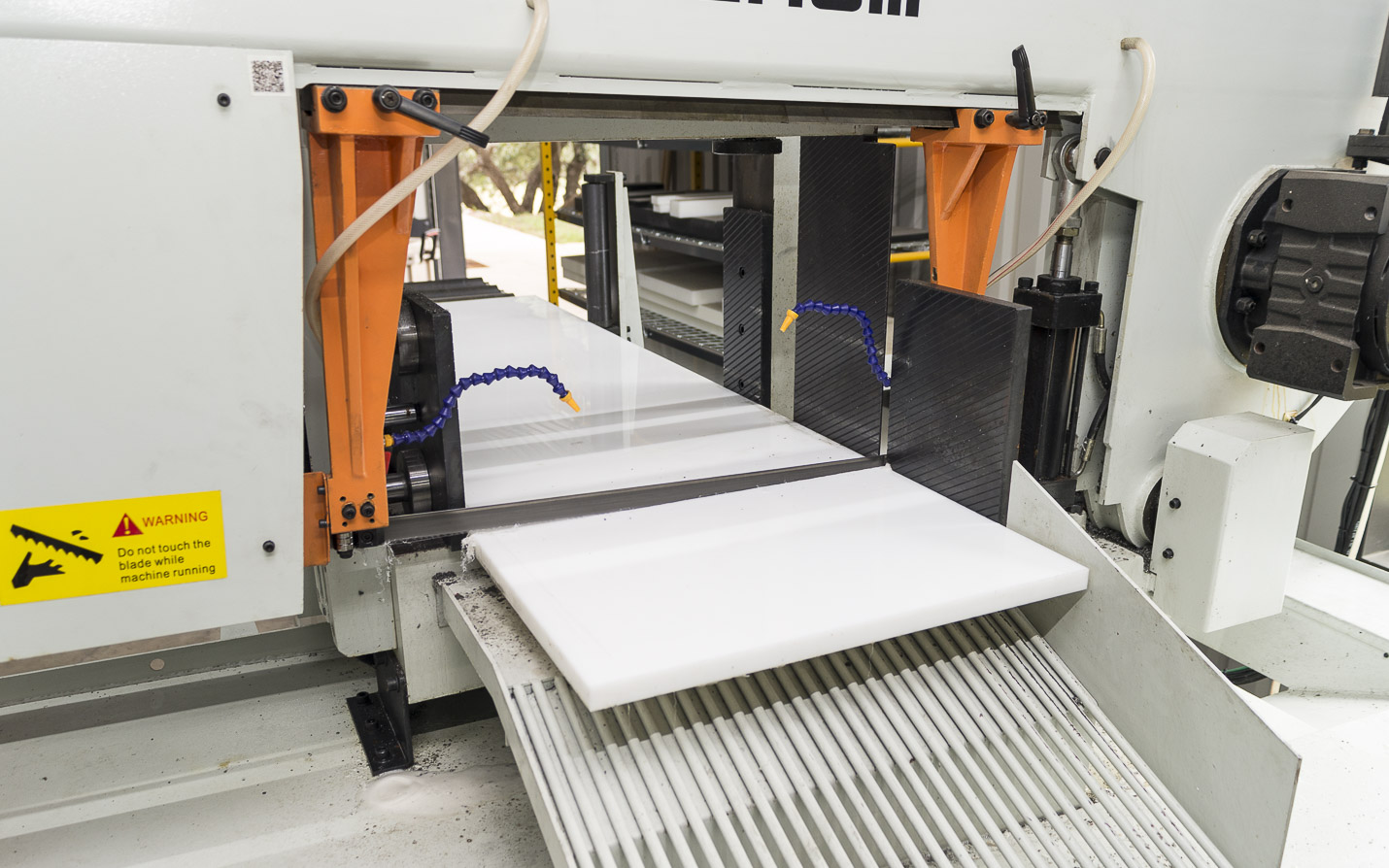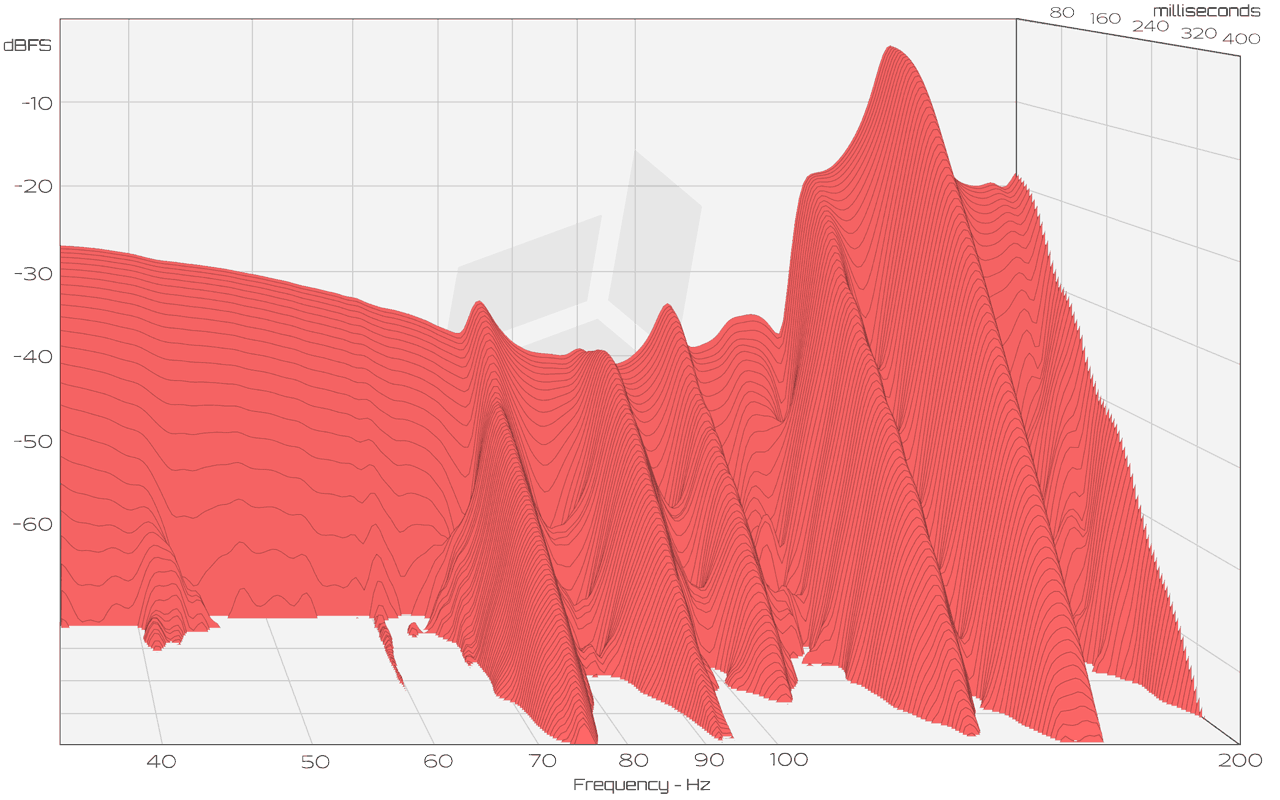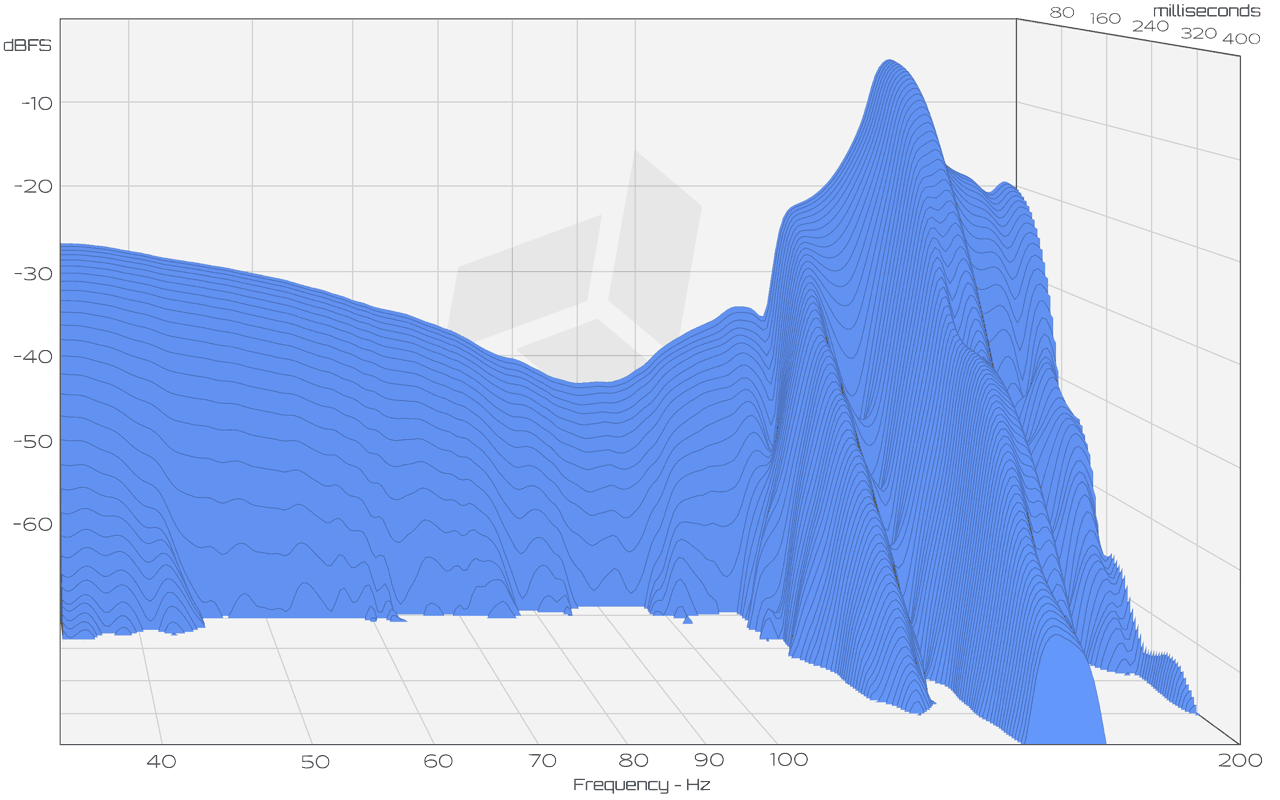Carbide Base फ़ुटर्स का उपयोग करके कंपन अपव्यय
यह ज्ञात है कि लाउडस्पीकर का घेरा अपनी निचली अनुनाद आवृत्तियों पर कुल विकिरणित ध्वनि में महत्वपूर्ण योगदान देता है [1] । भले ही लाउडस्पीकर के पैनलों का सतही वेग छोटा हो, लेकिन पैनल ड्राइवरों की तुलना में कई गुना अधिक दक्षता के साथ विकिरण करते हैं। यह ड्राइवरों के विकिरण क्षेत्र के सापेक्ष पैनलों के बड़े विकिरण क्षेत्र के कारण है। बाड़े के पैनलों से निकलने वाली ध्वनि श्रव्य विकृति पैदा कर सकती है और इसे कम किया जाना चाहिए। अनुनादों के आयाम को कम करने के लिए बाड़े के पैनलों को नम करना एक प्रभावी तरीका है [2] ।
इस प्रयोग का लक्ष्य यह निर्धारित करना था कि क्या लाउडस्पीकर के नीचे Carbide Base फ़ुटर लगाने से लाउडस्पीकर के पैनल के भीतर कम आवृत्ति के प्रतिध्वनि को कम किया जा सकता है। पैनल प्रतिध्वनि में कमी से फ़ुटर द्वारा प्रदान किए गए कंपन अपव्यय में सुधार को मापने में मदद मिलेगी। इस सुधार की तुलना कंक्रीट के फर्श पर स्टील फ़्लोर स्पाइक्स पर रखे लाउडस्पीकर के बाड़े के बेस केस से की जाएगी।









